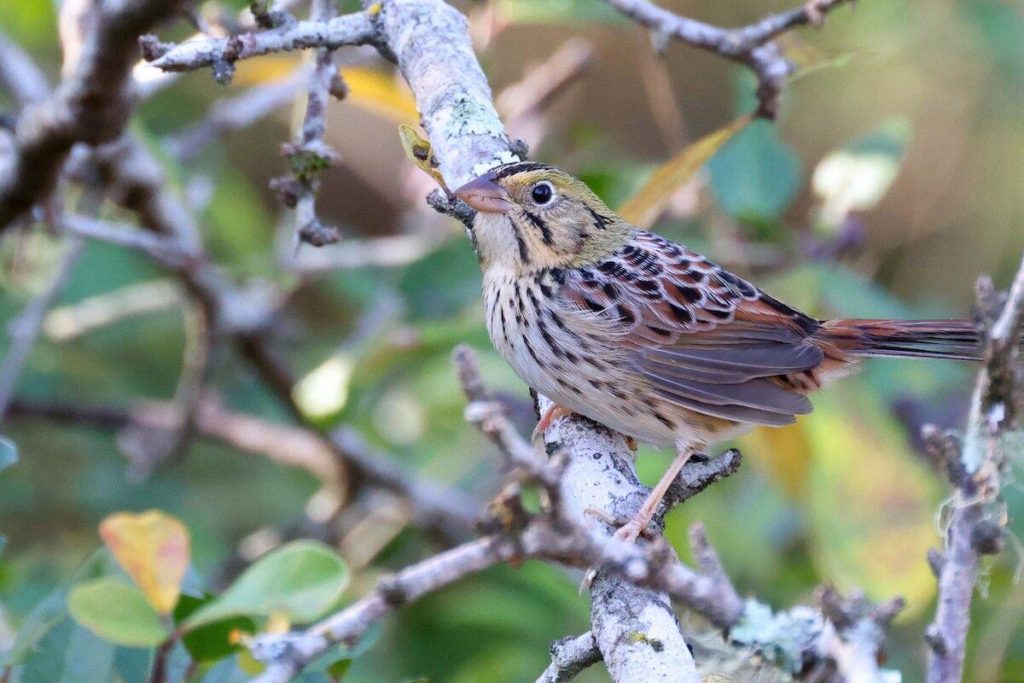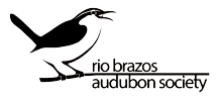
In the past few months, rare birds have captivated the American public, with national news running stories on the amazing travels of a Steller’s Sea-Eagle from Russia to Alaska, through Texas, and finally to Maine, where it seems content to stay.
In this time, Texas birders also found the country’s first confirmed record of a Bat Falcon, a small raptor of Central America that has captured hearts with its beauty (and awesome name) down in Santa Ana National Wildlife Refuge in the Lower Rio Grande Valley. While out of place, and certainly marvelous birds to see, the Sea-Eagle and Bat Falcon are happy accidents.
Here in Brazos County, we have a rare bird with a slightly more nuanced story.
On Nov. 14, College Station birder Brent Cox photographed a Henslow’s sparrow at the Texas A&M Ecology and Natural Resources Teaching Area, a publicly accessible property owned by Texas A&M for teaching, research and respectful outdoor recreation.
This sparrow, though small and sneaky, immediately set off a frenzy of birders. Birders were traveling to College Station to hope for a glimpse of the grassland species.
On Jan. 12, local birder Tyler Scott found another Henslow’s sparrow at Veterans Park and Athletic Complex, shocking the local birding community with news that a second bird had been found in a single year. As before, this bird drew the attention of birders from across the state, with many Texas birders looking to try their luck at spotting it.
But why are these birds so significant? And why should we care?
Widely regarded as one of the most beautiful North American sparrows, Henslow’s sparrows are small grassland birds found in patches of grassland throughout the Eastern U.S. that have a quirky habit of running on the ground instead of flying. Though strong fliers and highly migratory, they generally stay close to the ground until they feel the need to migrate north to breed or south for the winter.
Especially on their wintering grounds, we know very little about their life histories, their behavior or their diet. Similar to other grassland birds, Henslow’s sparrows are declining across their entire range, likely due to habitat loss due to fire suppression and land conversion.
In North America, grassland fires are often put out before damaging human property, which has led to the near collapse of grassland ecosystems. Henslow’s sparrow, in particular, is dependent on the seeds and grasses that emerge from a burned grassland. Remnant grassland habitat are the last strongholds of many grassland species, including the Henslow’s sparrow. Wildlife biologists and U.S. Fish and Wildlife officials are monitoring this decline and using practices like prescribed burning to maintain grasslands for our wildlife.
In Brazos County, much of our habitat is what we call Post Oak Savannah, which is essentially a grassland punctuated with our ubiquitous post oak trees. Historically, this habitat was prime real estate for Henslow’s sparrows to spend the winter. Since European colonization of Texas, this region has been highly productive for crop agriculture and ranching, which had enormous effects on the Brazos County ecosystem. Along with cattle ranching and grazing changing the composition of grassland habitat, fires were suppressed, which led to the Henslow’s sparrow being almost driven from this part of Texas.
In 2019, Texas A&M’s Ecology and Natural Resources Teaching Area came under new management and a prescribed fire program was started to restore some of the historic grassland habitat of Brazos County. These sparrows are the fruits of that labor, and provide hope that the Henslow’s sparrow may be returning to Brazos County yet again.
While not nearly as newsworthy as an observation of the world-travelling Steller’s Sea-Eagle or the unprecedented Texas sighting of the Bat Falcon, what we are learning about the importance of preserving and regenerating grasslands could lead to a sustained resurgence of the Henslow’s sparrow and other native species.
Keith Andringa is a doctoral student in the ecology and evolutionary biology program at Texas A&M. He is studying how urbanization and human activity affect the physiology of wild birds. He is a birder and member of Rio Brazos Audubon Society and occasionally puts on banding demonstrations to share his passion for learning in nature with the public.
